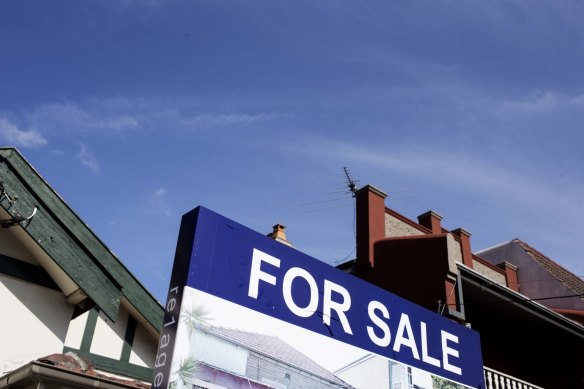- Exclusive
- Politics
- Federal
- Property market
This was published 3 years ago
Housing unaffordable for most people even before price spike
By Shane Wright
Forty per cent of first home buyers in Sydney and Hobart were priced out of their property market even before the latest surge in house values and new research reveals a widening gap between the nation’s capital cities.
Only a surge in federal and state government handouts, worth up to $88,000, and record-low interest rates has prevented even worse affordability issues hitting first-time buyers, but they could grow as a key scheme comes to an end.

Forty per cent of first home buyers in Sydney and Hobart were priced out of their property market even before the latest surge in house values.Credit: Dominic Lorrimer
Research released on Thursday by the National Housing Finance and Investment Corporation shows for the first time the affordability issues facing both buyers and renters based on income groups.
Most measures of affordability are based on the median price of a house while taking into account mortgage costs.
The corporation’s research, however, shows that once the income of potential buyers and renters is broken down there are enormous affordability issues that have grown over recent decades.
The data, which covers the financial year to June last year, shows the bottom 60 per cent of income earners in Sydney and Hobart can afford 10 to 20 per cent of the properties on sale in those markets. For the bottom 40 per cent less than 10 per cent of the market was affordable.
In Sydney, the bottom 80 per cent of first-time buyers earned enough to cover the cost of 40 per cent of homes on the market. But in Hobart, where incomes are lower, just 20 per cent of homes are affordable to 80 per cent of first-time buyers.
Brisbane is the nation’s most affordable capital for first-time buyers, where the bottom 40 per cent of income earners can afford between 60 and 70 per cent of houses on the market.
In Melbourne, the bottom 40 per cent can only afford between 10 and 20 per cent of the market. But this jumps to between 50 and 60 per cent of the market for the bottom 60 per cent.
In terms of the rental market, both Sydney and Hobart are the least affordable. In both cities, less than 10 per cent of rentals are affordable for the bottom 40 per cent of income earners.
In Melbourne, the rental market is off-limits to the bottom 20 per cent of income earners but this improves rapidly as wages increase.
Perth is the nation’s most affordable capital, with almost all rental properties affordable for people in the bottom 40 per cent of income.
The data pre-dates the sharp run up in house prices in every capital through the past nine months. Figures from CoreLogic to be released on Thursday are expected to show house prices in Sydney up by more than 6 per cent over the past three months.
First-home buyer activity has also surged.
Separate data from the corporation shows much of that activity is being driven by huge federal and state government stimulus schemes put in place to deal with the coronavirus pandemic.
The combined value of the schemes, including HomeBuilder, stamp duty concessions and first home owners’ grants, was at the end of December worth $86,000 to a first-time buyer in Victoria. In NSW, they were worth $85,000 while the highest at $88,000 was for people in the Northern Territory.
HomeBuilder, which provided grants of $15,000 to people who built or substantially renovated their properties, finished on Wednesday although it is expected to continue to support the sector until the end of the year.
Figures from the Australian Bureau of Statistics on Wednesday confirmed the scheme’s impact, with building approvals jumping 21.6 per cent in February to be 20.1 per cent higher than a year ago. Approvals of houses lifted by 15.1 per cent, setting a new all-time monthly record.
“Since the introduction of the HomeBuilder grant in June 2020, private house approvals have risen by almost 70 per cent,” ABS construction statistics director Bill Becker said.